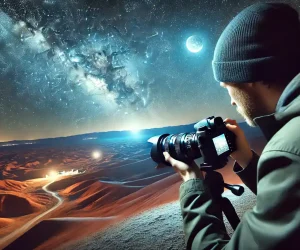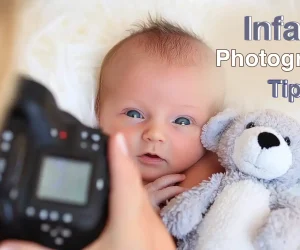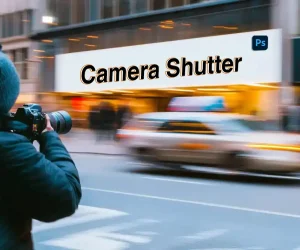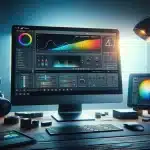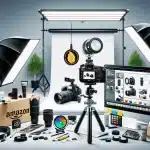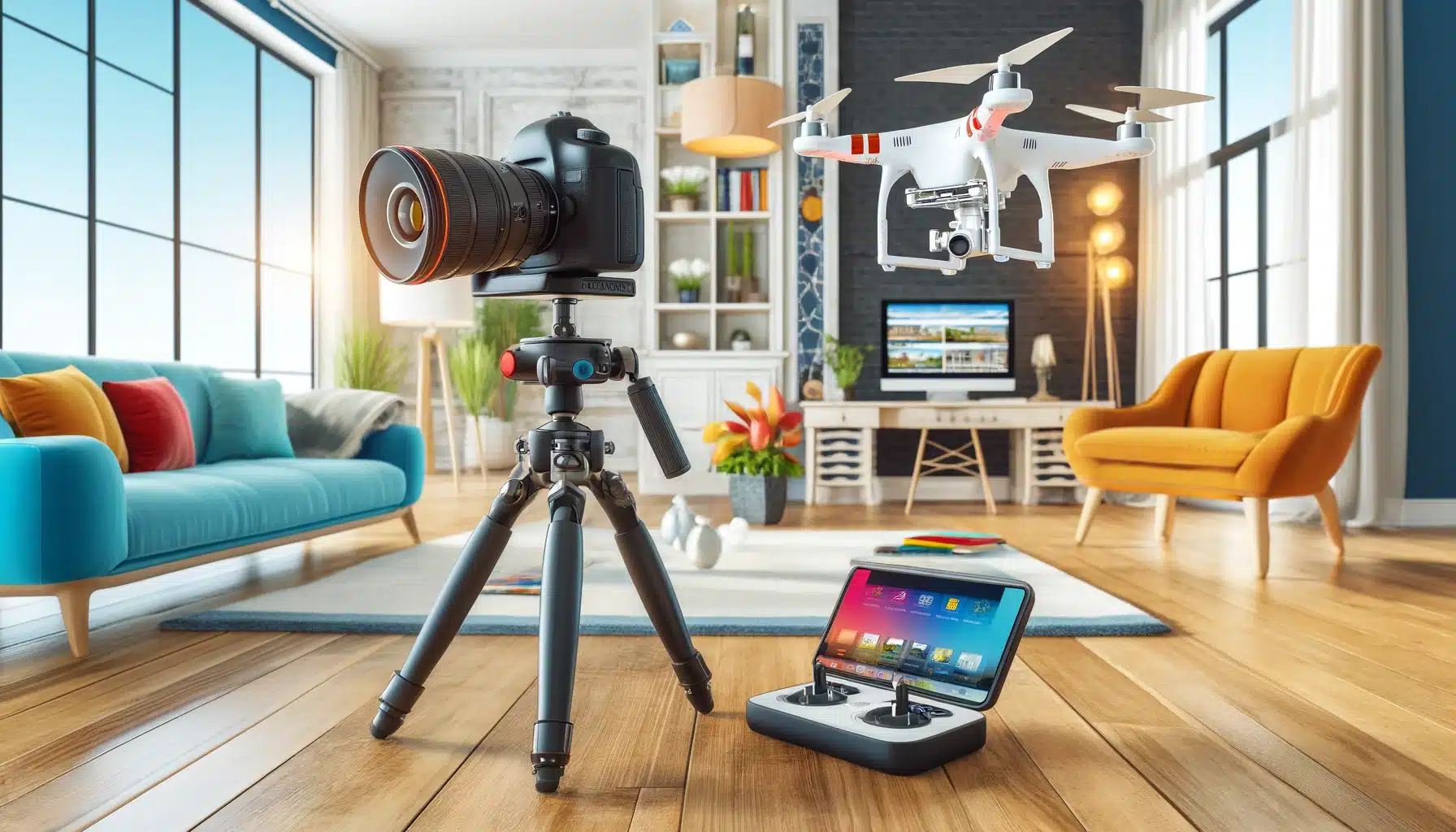
Introduction to Real Estate Photography
Real Estate Photography has become an essential tool in the competitive real estate market. Highest standard images can make a significant difference in attracting potential client and closing deals faster. With the increasing reliance on online property listings, having professional photos that highlight the best features of a property is crucial. Unlike standard photos taken with a phone, professional real estate photography employs specialized equipment and techniques to capture the true essence of a property, making it more appealing to prospective buyers.
Consider the case of a real estate agent who was struggling to sell a beautiful suburban home. Despite numerous showings, the property remained unsold for months. The agent decided to hire a professional real estate photographer who used a wide-angle lens to capture the spaciousness of the rooms and a drone to showcase the stunning landscape. The new photos highlighted the property’s unique features and created a compelling visual story. Within weeks, the home received multiple offers and sold above the asking price, demonstrating the powerful impact of professional real estate photography.
Table of Contents
Importance of Real Estate Photography
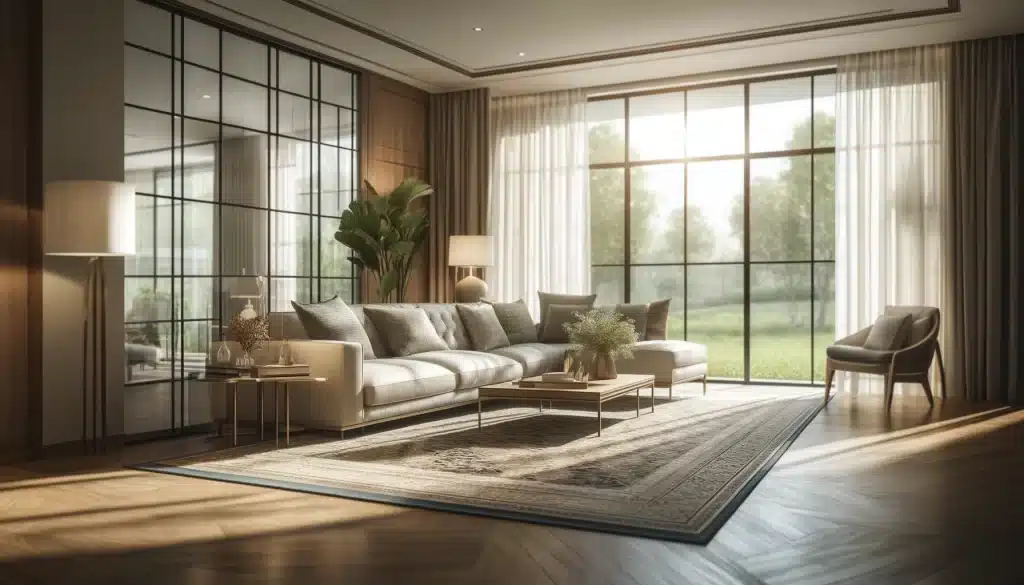
First Impressions Matter
Real estate photography is crucial because it creates the first impression of a property for potential buyers. High-quality photos can instantly attract viewers and pique their interest in the listing. A professional photograph showcases the property in the best light, highlighting its unique features and appealing aspects. This visual appeal can significantly increase the number of inquiries and viewings, ultimately leading to faster sales.
Enhances Online Listings
In today’s digital age, most buyers start their property search online. Highest standard real estate photography enhances online listings, making them stand out among countless others. Professional photos can capture the attention of buyers scrolling through listings, encouraging them to click on the property to learn more.
Highlights Property Features
Professional real estate photography can effectively highlight the key features and unique selling points of a property. This includes capturing spacious interiors, modern amenities, and beautiful outdoor spaces. By showcasing these features accurately and attractively, photos can facilitate buyers visualize themselves living in the space. This emotional connection can be a powerful motivator in the decision-making process.
Builds Credibility and Professionalism
The ideal photos reflect well on the real estate agent or agency, demonstrating professionalism and attention to detail. Listings with professional photography are perceived as more trustworthy and credible. This credibility can build confidence in potential buyers, making them more likely to consider the property seriously. It also helps in establishing the agent’s reputation in the market.
Real Estate Imaging Supports Marketing Efforts
Effective real estate photography supports various marketing efforts, including online advertising, brochures, and social media campaigns. Stunning photos can be used across multiple platforms to reach a broader audience. Visual content is highly shareable, increasing the likelihood of the property being seen by more potential buyers. This comprehensive marketing strategy can drive more traffic to the listing and increase the chances of a successful sale.
Camera Settings for Real Estate Visuals
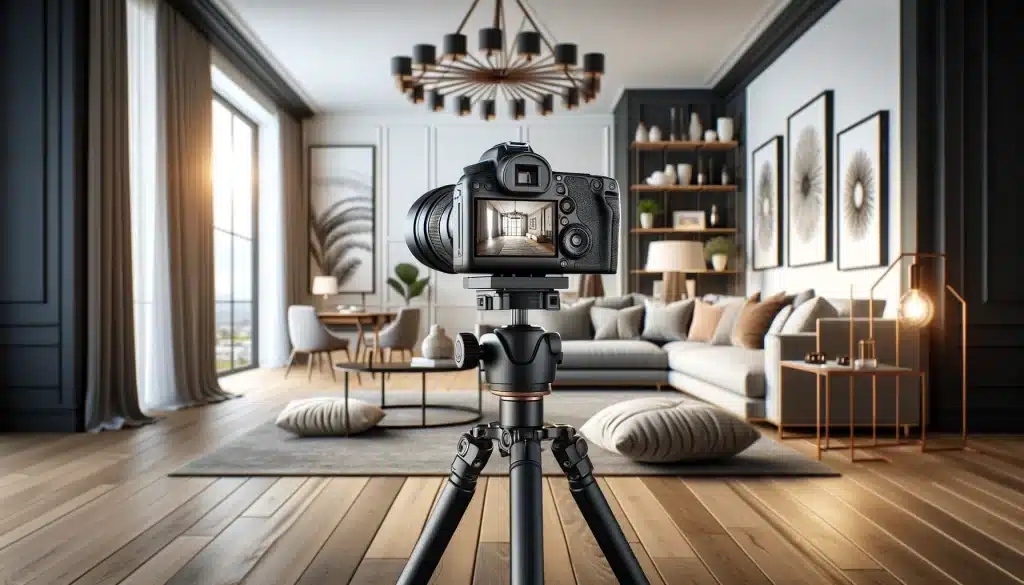
Aperture in Home Photography
Using the correct aperture is vital for ensuring that all elements in the frame are sharp and clear. For real estate photography, an aperture between f/8 and f/11 is recommended. This setting provides a wide depth of field, keeping both the foreground and background in focus. It ensures that the entire room is sharp, highlighting its features effectively.
ISO for Architectural Photography
The ISO setting controls the camera’s sensitivity to light. Keeping the ISO as low as possible, generally around 100-400, helps reduce noise and maintain photograph clarity. Higher ISO settings can introduce graininess, which can detract from the photo’s overall appearance. Using a tripod allows for longer exposure times, which can maintain a low ISO setting in low light conditions.
Shutter Speed for Real Estate Imaging
Shutter speed is important for capturing well-lit, blur-free images, especially in low-light environments. For interior shots, a slower shutter speed, such as 1/60 to 1/2 second, is often necessary to let in more light. Using a tripod helps keep the camera steady during long exposures, preventing motion blur and ensuring crisp photographs.
White Balance for Real Estate Photography
White balance settings ensure that colors in the photograph appear natural and consistent with the lighting. For interior photography, settings like Tungsten or Fluorescent can help correct for indoor lighting hues. For exterior shots, the Daylight or Cloudy settings are typically more suitable. Custom white balance can also be set by using a grey card for precise color accuracy.
| Setting | Recommended Range | Purpose | Notes |
|---|---|---|---|
| Aperture | f/8 to f/11 | Ensures sharpness throughout the photograph | Provides a wide depth of field |
| ISO | 100 to 400 | Maintains photograph clarity and reduces noise | Use a tripod to allow for lower ISO |
| Shutter Speed | 1/60 to 1/2 second | Captures well-lit, blur-free visuals | Use a tripod to prevent motion blur |
| White Balance | Tungsten, Fluorescent, Daylight, Cloudy | Ensures natural and consistent colors | Adjust according to conditions |
Recommended and Most Useful Tips for Real Estate Photography
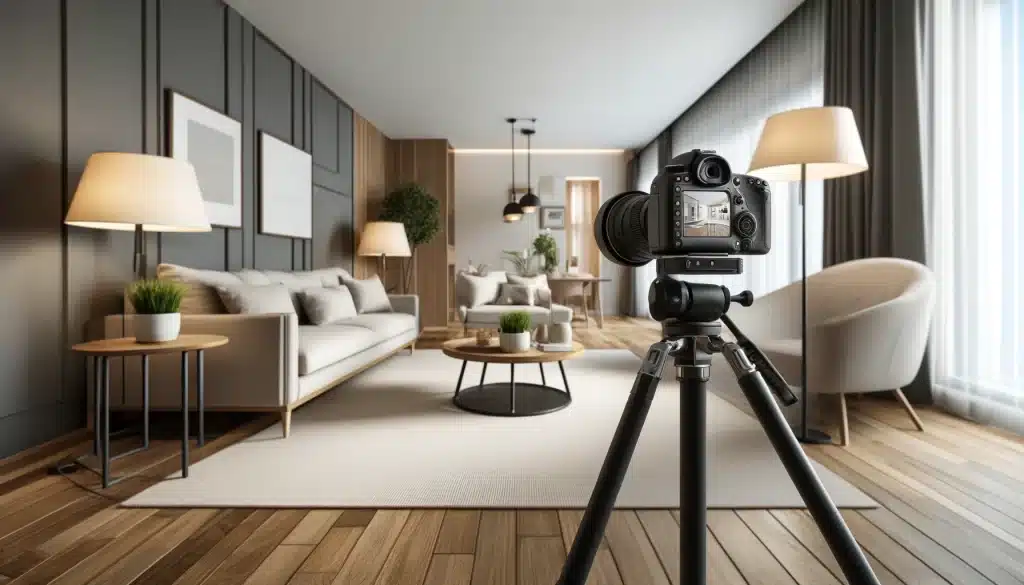
Use a Wide-Angle Lens
One of the essential real estate photography tips is to use a wide-angle lens. This type of lens can capture more of the scene in each shot, making rooms appear larger and more inviting. It provides a comprehensive view of the space, which is particularly useful for small rooms.
Keep the Camera Level
Maintaining a level camera is crucial to avoid distorted photographs. Real estate photography tips often emphasize the importance of straight vertical and horizontal lines, which create a professional and polished look. Use a tripod with a built-in level to ensure your shots are perfectly aligned. This technique helps in presenting a more realistic and appealing view of space.
Optimize Lighting
Ideal lighting is key to capturing ideal real estate photos. Shoot during the day when natural light is abundant, and use additional lighting if necessary to eliminate shadows. Open curtains and blinds to let in as much light as possible. Real estate photography tips suggest using soft lights to highlight the features of the home without creating harsh contrasts.
Stage the Space
Staging is an important real estate photography tip that involves arranging furniture and decor to make the space look inviting. Remove clutter and personal items to create a clean, welcoming environment. Consider adding fresh flowers or stylish accents to enhance the visual appeal. It helps potential buyers imagine themselves living in the house, which can increase their interest.
Shoot from Different Angles
Capturing photos from various viewpoints can showcase the space more effectively. Real estate photography tips recommend taking shots from different heights and perspectives to highlight unique features and create a dynamic visual experience. This approach can also cover any potential flaws by providing multiple viewpoints. Different angles can make the home appear more spacious and attractive. Showcasing key features can set the home apart from others on the market and justify premium pricing.
Edit Your Photos
Post-processing is a crucial step in creating professional real estate photographs. Use photo editing software like Photoshop and Lightroom to adjust brightness, contrast, and color balance. Real estate photography tips often highlight the importance of removing minor imperfections and enhancing details to make the photos stand out. Photo enhancement will transform good photos into greater ones, making your listing more appealing.
Create Virtual Tours
Virtual tours are becoming increasingly popular in real estate marketing. They provide a comprehensive view of the space and allow potential buyers to explore the home online. Real estate photography tips include using 360-degree photography or virtual tour software to create these immersive experiences. These visits can attract more interest and provide a valuable service to buyers who cannot visit in person.
Advanced Techniques for Real Estate Photography

HDR for Real Estate Photography
High Dynamic Range (HDR) photography is a technique that involves taking multiple exposures of the same scene and blending them to create a balanced image. This method ensures that both the bright and dark areas are properly exposed, resulting in a detailed and visually appealing photo. Real estate photographers use HDR to capture well-lit interiors without overexposing windows or underexposing shadowed areas.
Pro Tip: Learn how to utilize blending modes in Photoshop to make your workflow even easier.
Focus Stacking
Focus stacking is a technique where multiple photos taken at different focus distances are combined to create a photograph with maximum depth of field. This ensures that every part of the room, from foreground to background, is in sharp focus. This technique is particularly useful for real estate photography, where showcasing the entire space in clear detail can make a significant difference.
Twilight Photography
Capturing exterior shots during the twilight period, just after sunset or before sunrise, can create a dramatic and inviting atmosphere. The soft, diffused light during this time enhances the colors and details of the building’s exterior and surrounding landscape. Twilight shots are especially effective for showcasing outdoor lighting and creating a warm, welcoming feel.
Aerial Photography
Using drones to capture aerial shots is an advanced technique that provides a unique perspective of the house and its surroundings. Aerial photography can highlight the layout, landscape, and nearby amenities, offering a comprehensive view that ground-level photos cannot provide. This technique is increasingly popular and adds a professional touch to the real estate listing.
Virtual Staging
It involves digitally furnishing a vacant space to give potential buyers an idea of how the area can be utilized. This technique is cost-effective and allows for quick changes in decor style. Photographers can use software to add furniture, artwork, and other decor elements to photos, making the space look more appealing and lived-in.
Cinemagraphs
Cinemagraphs are still photos that incorporate subtle motion, creating a dynamic and eye-catching visual effect. For example, a cinemagraph might feature a room with a fireplace where the flames are gently flickering. This technique can make listings stand out and attract more interest by adding an element of surprise and engagement.
360-Degree Photos and Videos
Creating 360-degree photos and videos allows viewers to interact with the space and explore it as if they were physically present. This immersive experience is particularly useful for virtual tours and can significantly enhance the online viewing experience. Photographers can use special cameras or apps to capture these interactive visuals.
Use of Tilt-Shift Lenses
Tilt-shift lenses assist control the perspective and correct distortion, which is essential for architectural photography. These lenses allow photographers to keep vertical lines straight, even when shooting from a lower or higher position. This technique ensures that the final snaps have a professional look, free from the common distortions seen with regular lenses.
Best Cameras and Smartphones for Real Estate Photography
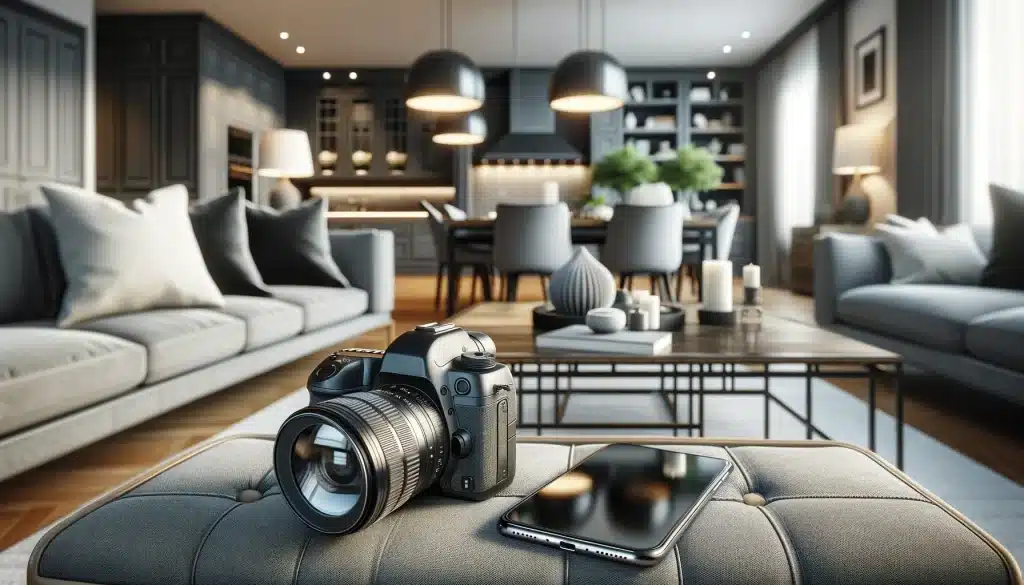
Canon EOS R5
The Canon EOS R5 stands out with its 45MP full-frame sensor and DIGIC X image processor. It excels in low-light conditions, ensuring high-quality captures with minimal noise. The camera also supports 8K video, making it ideal for high-resolution walkthroughs. Its dual card slots provide ample storage, making it a reliable choice for extensive shooting sessions.
Sony A7 IV
The Sony A7 IV is renowned for its 33MP sensor and advanced autofocus system. It offers exceptional photograph and 4K video capabilities, making it versatile for both stills and video. The camera’s Bionz XR processor ensures fast and efficient performance, which is beneficial for real estate photographers who need to work quickly and efficiently.
Nikon Z6 II
The Nikon Z6 II features a 24.5MP full-frame sensor with excellent low-light performance. Its advanced autofocus system with 273 detection points ensures sharp and accurate captures. The camera’s 4K video capability and high-speed processing make it an awesome tool for creating detailed and dynamic content for real estate listings.
Canon EOS R6 Mark II
The Canon EOS R6 Mark II is a powerful and compact option with a 24MP sensor and DIGIC X processor. It excels in high-ISO performance, producing clear and noise-free photographs even in challenging conditions. The 5-axis in-body stabilization is particularly useful for handheld shooting, ensuring steady and crisp results
iPhone 15 Pro Max
The iPhone 15 Pro Max offers a 48MP main camera with impressive wide and ultra-wide modules. Other camera functions include ƒ/1.78 aperture, second‑generation sensor‑shift, optical image stabilization, 100% Focus Pixels, support for super‑high‑resolution photos (24MP and 48MP). It excels in capturing sharp and detailed photos, making it a strong contender for real estate photography. The phone’s 4K video capabilities are perfect for creating walkthroughs, adding versatility to your shooting options.
Google Pixel 7 Pro
The Google Pixel 7 Pro features a 50MP main sensor with advanced computational photography capabilities. Its Night Sight mode enhances low-light photography, making it suitable for capturing interiors without additional lighting. The phone’s AI-powered editing tools also provide assistance in refining photographs quickly and efficiently.
Samsung Galaxy S23 Ultra
The Samsung Galaxy S23 Ultra comes with a 108MP main sensor and sophisticated image processing. It offers excellent dynamic range and detail, making it ideal for capturing both interiors and exteriors. The camera’s 8K video recording capability is a great addition for creating ideal real estate videos.
OnePlus 11 Pro
The OnePlus 11 Pro features a 50MP main camera with a Sony IMX sensor, known for its clarity and detail. The phone excels in both photograph and video capture, with strong performance in various lighting conditions. Its Hasselblad collaboration ensures color accuracy and sharpness, making it a reliable tool for real estate photography.
These recommendations encompass the latest devices, ensuring you have the best tools for capturing stunning visuals. Incorporate these real estate photography tips to enhance your work and attract more interest in your listings.
Pro Tip: These tips not only help in landscape photography but are also useful in different types such as wildlife photography.
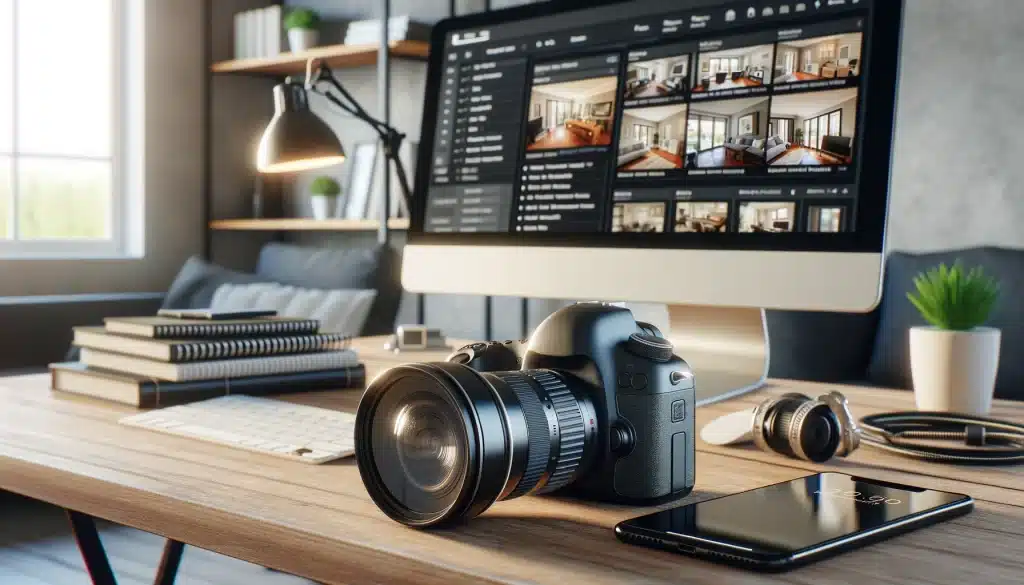
FAQs for Real Estate Photography
What settings to use for real estate photography?
For real estate photography, use an aperture between f/8 and f/11 for sharpness throughout the photograph. Set the ISO to 100-400 to minimize noise and ensure clarity. Adjust the shutter speed to 1/60 to 1/2 second for well-lit, blur-free captures, especially in low-light environments. Use a tripod and a remote shutter release to maintain stability and consistency in your shots.
What camera do real estate agents use?
Real estate agents often use cameras like the Canon EOS R5 for its high-resolution 45MP sensor and excellent low-light performance. Another popular choice is the Sony A7 IV, which offers a versatile 33MP sensor and advanced autofocus, making it ideal for capturing detailed and vibrant photographs. These cameras provide the features that they need to showcase their listings effectively.
What is a good real estate quote?
The ideal real estate quote that resonates with clients is: “Location, location, location. The three most important words in real estate.” This emphasizes the crucial aspect of property value and helps agencies convey the importance of choosing the right location to their clients. Another compelling quote is: “Real estate is not just a business, it’s about connecting clients with their dream homes.”
How do I find a real estate photographer near me?
To find a real estate photographer near you, start by searching online directories and review sites like Yelp or Google Business. You can also ask for recommendations from local real estate agencies who regularly use these services. Checking social media platforms and local photography groups can also facilitate you connect with experienced photographers who specialize in real estate photography.
Conclusion
Real estate photography has the power to transform how spaces are perceived, significantly impacting the success of property listings. I recall a time when I worked on a photoshoot for a beautiful but challenging interior. Using techniques like HDR photography and focus stacking, I managed to highlight the space’s best features. The agent was thrilled with the results, and the listing garnered much more attention, leading to a swift sale. This experience reinforced the importance of utilizing advanced photography techniques, settings and tools, such as the polygon tool, to create compelling photographs that attract clients.
If you’re looking to enhance your skills further and offer top-tier services, consider enrolling in our specialized courses. Our Photoshop Course, Photoshop guide and Lightroom Course are designed to provide you with the knowledge and techniques needed to excel in real estate photography. Join us today and take your real estate photography to the next level!
Have a nice photoshoot!
Learn more about
- Architectural Photography
- Photography Techniques
- Property Photography Tips
- Real Estate Marketing
- Real Estate Photography
Course
Light Effect Photoshop
Lightroom Course 2025
Adobe Photoshop Course 2025
Photo Editing Course


Download Your Free Guide Now!
Discover the secrets of photography with our printable guide! Master essential techniques like aperture, shutter speed, and ISO to create stunning images. Get your free printable PDF now and start turning your snapshots into masterpieces!






